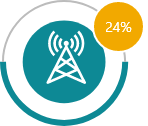BACKGROUND
According to the latest WHO estimates, Ukraine has the 4th highest TB incidence rate, 3rd highest TB mortality rate (excluding HIV) and the highest mortality due to HIV-associated TB, among the 53 countries of the WHO European Region, As per WHO 2021 Global TB report, the TB incidence in Ukraine is 73 cases per 100,000. The estimated proportion of rifampicin-resistant TB (RR-TB) among new and previously treated TB cases was 27% and 43%, respectively, in 2019. [1]
Affected by the COVID19 pandemic, country’s TB case notification has majorly dropped in 2020, however, in 2021, the health system has made efforts to revive its TB surveillance practices and the notification is steadily improving to reach closer to previous rates.
Ukraine adopted the National Strategy on HIV/AIDS, Tuberculosis and Viral Hepatitis Response for the period until 2030, aimed at establishing an effective system for TB diagnosis, treatment and prevention, accessible to all people of the country. [2]
Ukraine has adopted the framework of the Concept of Informatization of Health Care of Ukraine for 2013-2018. In accordance with that concept, the Unified Health Information System of Ukraine must be created. Thus, the Management Information System for the Socially Significant Diseases (MIS SSD) is designed to create a unified repository of data on epidemiological surveillance of tuberculosis, HIV, and hepatitis C, medical surveillance, as well as information support for monitoring and evaluation, procurement planning, accounting, and control. movement of medicines and medical products. Currently, the MIS SSD is in the process of realization in the fields.
Ukraine is committed to achieve the targets set out in the WHO Global End TB Strategy. [3] Improving the provision of TB treatment and increasing the treatment success rate is a priority for the NTP. The NTP is committed to ensure access to new TB drugs and novel shorter treatment regimens for successful treatment of individuals with MDR-TB.[2,3] [2] , [3] The Government of Ukraine is working towards improving the system of organization and provision of TB care; ensure effective detection of new cases and prevention of progression of existing cases to drug-resistant TB (DR-TB); and improve the quality and effectiveness of TB treatment. [2]
Ukraine has an extensive system of specialized TB services with 5110 hospital beds for TB nationally. Over 90% of TB patients (with both DS-TB and DR-TB) start their treatment in hospitals. [4]
The main challenges of the TB response in Ukraine include insufficient detection of TB late enrollment in treatment, which results in high mortality due to TB, especially among people with DR-TB and TB/HIV coinfection. TB. [5]
In 2010, Ukraine introduced a National electronic register for TB patients – “eTB Manager” – that included data on all TB patients registered in the country. The electronic register was funded by USAID and The Global Fund’s support, under its Strengthening Pharmaceutical Systems program, implemented by MSH. eTB Manager has enabled better follow-up of patients who transfer between treatment facilities or move from the penitentiary system to public facilities. [6] [7]
Ukraine has set digital transformation as a policy priority, marked by recent successes in implementation of the ProZorro and eHealth systems, 4G mobile coverage, and the introduction of eServices in the public and private sectors. [8] As per 2019 figures, internet penetration stands at 67.6% in the country, and about 67% of the population uses smartphones.[9] Use of Digital or electronic health applications to manage tuberculosis can contribute to large-scale implementation of new diagnostics and novel medicines, particularly in resource-constrained settings.
Ukraine has set digital transformation as a policy priority, marked by recent successes in implementation of the ProZorro and eHealth systems, 4G mobile coverage, and the introduction of eServices in the public and private sectors. [8] As per 2019 figures, internet penetration stands at 67.6% in the country, and about 67% of the population uses smartphones. [9] Use of Digital or electronic health applications to manage tuberculosis can contribute to large-scale implementation of new diagnostics and novel medicines, particularly in resource-constrained settings.
This country digital assessment report aims at providing strategic recommendations and way forward to developing and scaling a comprehensive case-based TB surveillance system while leveraging the existing infrastructure, in-house capacity and assets. Detailed recommendations are provided in the later section of this country report.

STATUS OF CASE BASED TB NOTIFICATION
The Primary tool implemented by the National TB program for TB surveillance is :
✓ eTB Manager (as of June 2021): It has been deployed at more than 540 TB servicing Units. It was initially introduced in 2010 under USAID and The Global Fund support initiative.
In 2022, Ukraine plans to initiate the piloting of MIS SSD , and after the initiation stage, the countrywide scale-up of MIS SSD is planned to replace eTB manager.
Currently, there are two systems of data collection that are working in parallel, the first one is electronic data reporting, and the second is paper-based reporting. Both systems are being used for data cross-check and eliminating possible mistakes in the reporting. Data accuracy and completeness in being checked on a routine basis at the regional and national levels.
The current version of eTB manager is used for both DR-TB and DS-TB notification, monitoring and treatment outcome, & has 3 sections- Laboratory, Pharmaceutical management and Patient cases. Users of the system can have administrative or data reporting roles.
The current system also generates quarterly and other reports in real time, which are being accessed and used by district, oblast, and national program managers.
Ukraine is in the process of transition to MIS and the TB component will be added as a dedicated module in it. Data from eTB Manager is also being transferred to the new system, and upon full operationalization, MIS SSD will be linked with the national health insurance system (NHSU), through the E-Health Platform.
A key success of the digital health system implementation in Ukraine is the creation of a single-source repository data on TB, HIV, Hep C, under MIS SSD. This system complies with the national legislations on security and date protection, and also aims to eliminate paper reporting and reduce the workload for the staff in the fields.
OneImpact community-led monitoring (CLM) empowers people affected by TB to access health and support services, claim their human rights, and identify and reduce stigma. The NTP in its NSP (2021) mentions its importance and the change brought by the platform in mobilizing the communities. NTP is considering to integrate the application with the e-TB manager system.

ELECTRONIC TB NOTIFICATION DATA COLLECTION AND USE
| TARGET | CURRENT SCALE | COLLECTION TOOLS | DATA TYPE | DATA USAGE | |||
|---|---|---|---|---|---|---|---|

National Level
|
Data Not Collected from this level
|
eTB manager Dashboard | |||||

Oblast
level
|
24 (2 special cities ) | Data not collected from this level | eTB manager Dashboard | ||||

Raion
level
|
140 | 140 | eTB manager | Case Based | eTB manager Dashboard | ||

Facility level
|
530+ (TB servicing Unit) | 530 (2000 Users) | eTB manager
Paper Based |
Case-based, |
eTB manager
Dashboard
Excel |
||

Community Level
|
Data not collected from this level | ||||||

CASCADE OF CARE MONITORING
PRESUMPTIVE SCREENING
TB Testing
Treatment Initiation
Treatment Monitoring
Treatment Outcome
Contact Tracing






| KEY DATA VARIABLES | Yes/No |
|---|---|
| Demographic details (Age, DOB, Gender) |

|
| Address and contact details (Country, Division, District, House address) |

|
| Geolocation (GPS coordinates of the household) |

|
| Contact details (Phone number/Mobile number, WhatsApp, Email etc.) |

|
| Health Facility address | |
| Type of health facility (Public, Private etc.) | |
| Site of TB (Pulmonary, Extra-pulmonary) |

|
| Type of diagnostic test (Microscopy, GeneXpert, TruNaat, CXR, etc.) |

|
| Date of test result |

|
| Drug susceptibility (DSTB, DRTB) |

|
| Treatment Regimen |

|
| Treatment start and end date |

|
| Co-morbidity (HIV, Diabetes, COVID-19 etc.) |

|
| Treatment monitoring/adherence |

|
| Treatment outcomes |

|
| KEY INDICATORS | Yes/No |
|---|---|
| Presumptive screening (proportion) | |
| Treatment initiation (proportion) |

|
| Treatment monitoring/adherence | |
| Treatment outcome (proportion) |

|
| Spatial distribution of TB notification |

|
| Age-group & sex wise aggregate numbers and proportions notified |

|
| Basis of diagnosis wise aggregate numbers and proportions notified |

|
| Type/site/drug resistance wise aggregate numbers and proportions notified |

|
| Provider source-wise aggregate numbers and proportions notified |

|
| Comorbidity wise aggregate numbers and proportions notified |

|
| Key-population wise aggregate numbers and proportions notified |

|
| Estimate/Target wise notification/treatment coverage (proportions) |

|
| Provider-type disaggregated treatment outcomes (proportions) |

|
| Comorbidity disaggregated treatment outcomes (proportions) |

|
| Key population disaggregated treatment outcomes (proportions) |

|
 Digital
(aggregated)
Digital
(aggregated)
STATUS OF ELECTRONIC CASE BASED TB SURVEILLANCE
Electronic System For Case Based TB Notification
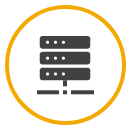
eTB manager
Lowest Unit For TB Notification Digitisation

TB servicing units
Stage Of Notification

Treatment Initiation
Level Of Access And Use Of TB Notification Data

District/ Region level
Private Sector Notification

Manual notification. Accounts to nearly 1% of the total reporting
Frequency of digitization of TB notification

Real time
Mode Of Follow-Up With Notified Cases
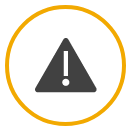
Phone calls, Household visits
Scale Of Implementation

National roll out
Contact Tracing For TB Notified Cases
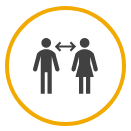
None
Channel Enablement

eTB web application
Govt. order for mandatory TB notification

None
PRIVATE SECTOR NOTIFICATION

Majority of the TB case notifications are provided by state TB physicians from the state hospitals. The proportion of state notifications amounts to 99%, and the remaining 1% of TB notifications are provided by the private sector.
COUNTRY IT CAPACITY

Country Server
National TB program uses a cloud based server to support the data storage and use.
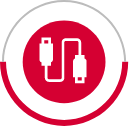
Interoperability
Necessary APIs available, Data export available
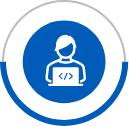
Country IT team
In-house country IT team
CURRENT RESOURCES AVAILABLE
Ukraine has received USD 35.8 million grant funds from the Global Fund to fight AIDS, Tuberculosis and Malaria.
Ukraine was awarded five-year USAID-funded the STCEU project designed to decrease the TB burden in Ukraine.

MILESTONES ACHIEVED AND ROAD MAP
2010-2012
eTB manager piloted
2013-14
eTB Manager Nationally Rolled out , Further upgrades and expansion to include other units ( military etc )
2017
Additional Modules added on Treatment and other modules were upgraded
2021
Pilot roll out of the integrated platform, i.e. MIS SSD
2018
Access To Laboratories for direct use and test results update
2019-20
Decision to merge ETB & HIV MIS to develop one solution (MIS SSD)
2021-23
Planning for GO-LIVE with new upgrades and improvements to the integrated systems

OTHER COMPLEMENTING DIGITAL TOOLS
| Purpose | Tools | Channel | Developed By | Supported By | Scale |
|---|---|---|---|---|---|
| Digital Adherence | VDOT EvriMED pillbox | Mobile app Tabletop dispenser | Sure Adhere Wisepill | Stop TB partnershipb | Pilot |
| Logistic Management | HIV MIS | eTB manager | MSH | USAID | Under development |
| Quan TB | Web Application | SIAPS | USAID | Limited use | |
| Laboratory Information Management | LMIS | eTB manager | MSH | USAID | Under Development |
| Community Led Monitoring (CLM) | OneImpact | Mobile App | Dure Technologies | Stop TB | Pilot (under consideration to be integrated) |
| Contact Tracing | Nil | ||||

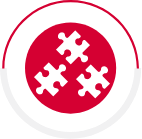

KEY CHALLENGES

Unified system: Fragmentation of systems for different diseases has resulted in a proliferation of multiple parallel systems, which is now being unified in the MIS SSD system, which further needs interlinkage with other digital health systems.

Data duplication: due to usage of multiple parallel system (eTB manager and paper based) data is often duplicated which results in hampering the data quality

Insufficient internet coverage results in delayed data entry and reporting.

Lack of Technical support and capacity: At peripheral sites, regular training, data security and protection of data is limited, that results in loss of data.

Funding and Financial requirements: NTP is exploring fundings for improving the MIS SSD system, internet connectivity and transitioning to updated WHO case definitions (2020-21).

NTP VISION
- ❖ NTP plans to pilot MISS SSD TB Module in 2022 and scale it up to the national level. This would allow moving from the old E TB Manager to a new system and having single data source repositories.
- ❖ Improving decision making based on timely data analysis, operation research, and training and capacity building.

RESOURCES NEED
Based on multi-stakeholder discussions, country feedbacks and recommendations for full-filling country’s vision, we have put together an estimated investment requirements and areas needing support for provisioning of a comprehensive case based digital TB surveillance system
Hardware and Infrastructure :

Mobile Devices (for data collection): UUkraine has 540 TB services units and to provision mobile device for every facility for case-based TB surveillance, USD 81,000 will be needed assuming USD 150 per mobile devices.

Tablet (for data use):Ukraine has 140 districts and 24 Oblasts, and Kyiv and Odessa as special cities. To promote active data use, each district and region should be given a tablet which would cost roughly around USD 33,200 assuming USD 200 per Tablet devices.

Internet: In case WiFi is not available in each facility, then mobile internet cost of around USD 211,800 should be considered (assuming USD 100 mobile data cost for the entire year per facility, district and regional user).

Server: Based on the current volumes of new cases, Ukraine would need an investment of USD 30,000-40,000 for next 3 years for server and server maintenance.
Note: Existing devices available through other health programs can be leveraged. In that case, the above-mentioned costing can be accordingly considered.
Software Development :

Based on various multi-stakeholder meetings and given the fact Ukraine already have a strong foundation for e-TB Manager system for TB, around USD 250,000-400,000 should be budgeted for a comprehensive TB surveillance system and analytical dashboard for data use.
Capacity Building and Implementation :

After the software development, a dedicated pool of technical resources will be needed to support platform administration, data management and support. A team of 4- 6 skilled resources attributing to a cost of around USD 48,000-72,000 per annum should be budgeted (or USD 288,000-216,000 for 3 years assuming USD 1,000 per month per resources). Additionally, reskilling of the current IT team should be budgeted.

Training : This would involve training material development and onsite and remote training of the trainers. Training sessions should be planned for each of the 140 districts, which could cost roughly USD 100 per district, amounting to USD 14,000, which will be further supported with e-Learning packages. Also, a dedicated trainer should be budgeted in case there is none.
TOTAL investment of around USD 1– 1.5 million for 3 years will be needed for further strengthening and maintaining a comprehensive case-based digital TB surveillance system in Ukraine.
Disclaimer: The above budget is a function of number of facilities, districts and regions and expected volume of data. This only provides a ballpark figure of what is needed in terms of budget.

The paradigm shift towards digitalization of healthcare in Ukraine allows the national tuberculosis program to become more proactive and respond quickly to new challenges. By strengthening digital systems, the country increases the capacity of national programme, modernizes staff education, and strengthens surveillance. All of these are integral components in achieving the national goal of ending tuberculosis.


Ministry of Health, Ukraine

Dr. Yana Terleieva|NTP Manager

Recommendations
Following are some of the key recommendations suggested based on the findings of this assessment of country’s digital ecosystem and infrastructure:

Strategic Costed Plan
As a first step it is important for the country to create a comprehensive costed action plan for development, implementation and scale up of the TB case-based surveillance system.
Based on NTP’s vision and the recommendations for improvements, the plan should clearly define targets with actionable interventions and funding requirements supported with a detailed work plan along with timelines. The plan will help the country to assess and monitor the progress to ensure that any risks can be duly mitigated.
Tentative timeline: Month 0-1

Device Procurement
One of the limitation highlighted by NTP is the need to improve the data collection processes at the facility level. To streamline this, procurement, distribution and maintenance of the required data entry equipment like laptops, mobile/tablet devices should be done on an urgent basis. Improving the current infrastructure at the facilities is crucial for a complete transition to digital notification.
Tentative timeline: Month 0-3

Enhancement of Case Based Notification systems
The NSP highlights the importance of strengthening the TB Notification information system for improving all the TB service provisions [2]
Ukraine has already developed and deployed a Case Based TB notification e-TB manager in its about 540 TB service units. The presence of the system lays a strong foundation for executing the vision of creating a comprehensive and integrated real-time case-based TB surveillance and notification system.
It is recommended to scale-up the new MIS SSD system and its extension to support integration with external systems like Gene Xperts, Digital X-Ray outputs, current National Health management systems and MATS app as visioned by the national TB program with the concept of an integrated Health Information Management System (HMIS). As per the NTP team, it is planned to start the pilot on TB module of MIS SSD in 2022 in two regions of Ukraine. After the initial stage, the countrywide scale-up of TB component of SSD MIS is expected.
These data exchanges can be made seamless with API sharing between the platforms and the central repository.
Recommended data exchange/ ETL tools like Talend, Informatica [10.1] , [10.2] makes data management task much easier and simultaneously improves data warehousing. These exchange tools also comply with FHIR , GDPR standards for more secured and seamless data exchange supporting standard data taxonomy and meta data management processe
Tentative timeline: Month 0-6

Data Use
The NSP emphasizes on the importance and need for improve data use. This can be made possible by making case-based TB data across systems more real time and useful.
Building on the current DHIS2 visualization module which offers a comprehensive dashboard for reviewing of program and data indicators, additional features of pivot table , event reports which support dimensions , data aggregation reports and individual line lists and with timeline views are extremely useful.
To strengthen and expand the data visualisation scope and making effective use of data for predictive modelling, data science and for advanced analytics, it is recommended to use best of the breed tools like Tableau , Power BI which offer these features. APIs can be generated and connected with these applications, and these can be used as an extended analytical component of the data analysis framework. [11]
Tentative timeline: Month 6-12

Mobile App
Implementation of data collection via mobile app to ensure ease of use and real time reporting:
One of the challenges reported by the NTP during the data collection processes is inconsistent data connectivity/network issues which delay reporting of cases, and inconsistent availability of hardware for data entry. One effective way to overcome this is to support the current data collection processes by introducing a mobile application for government facilities as well.
Other advantages for a mobile application include better performance , effective use of device features like in house system updates , usage of location, security measures and tracking user patterns and issue log mechanisms and other analytics measures.
Several mobile solutions for real time case-based notifications can be explored for local adaption. Open-source technologies like DHIS2, Mobile App, ODK and KOBO are some notable examples. [12] [12.1] , [12.2] , [12.3] ,
Tentative timeline: Month 0-12

Capacity building for application maintenance
Planning for capacity building includes workforce assessment, ranging from ICT professionals to health care workers. Since the application requires regular updates and adaptations, the system support team requires trained personnel on the technology stack in use.
Strengthening the NTP team with trained system administrators will help in reducing costs (in seeking technical support) and improving and expediting the planned implementations.
Tentative timeline: Month 6-24

E-Learning
Packages to train health professionals on SSD MIS TB module’s use and workflows.
Any national scale roll-out will have its own capacity and training challenges which requires development of a comprehensive eLearning module allowing all health staffs involved in data collection process for training not only on the SSD MIS TB module but also on the latest manual of procedure and continued medical education on TB care.
To address the challenges with periodic training of facility level staff to orient them on using the MIS SSD TB module for direct data reporting, the MOH must engage in development of a comprehensive eLearning module for app training. Training tools like Moodle [13] built on standard LMS framework can be reviewed for application rollouts.
Additionally, for training and updates on the latest manual of procedure and continued medical education on TB care, modules can be developed for TB Health providers, administrators at facility and district level to develop and enhance M&E competencies for ensuring a consistent program oversight, specially for the case-based tracker roll out within the existing applications.
Guide TB platform developed by WHO Philippines is a good example of eLearning module for health staff involved in TB care
Tentative timeline: Month 0-12

Patient Interactive Systems
Establishing a direct and secured mechanism for engaging with patient has potential for drastic improvements in tracking lost to follow-up patients.
Auto generation of notification and messaging by the system through communication channels like Social Media channel, IVRS and SMS outbound messages should be explored. Open-source applications like Open MRS can be used for these activities. [14]
Tentative timeline: Month 0-12

Contact tracing Module
Contacts of TB patients are at the greater risk of obtaining either TB infection or TB disease, depending on factors such as type of contact infectiousness of source case and environmental characteristics. In addition, host-related factors (age and immunology) additionally intervene with the likelihood of the patient getting to be infected or ill.
For this, the recommendation is to build additional modules for Contact Tracing, Presumptive Screening and TPT by leveraging the MIS SSD system and expanding its workflow
Tentative timeline: Month 0-12

Unique Identifiers
Duplication of data due to multiple systems are used for data entering. This results in missing out some of crucial and patients are often not followed-up or tracked.
It is recommended while capturing the information of the TB cases they should be linked with unique identifiers like national Id, to ensure that duplication of the patient is avoided and case is tracked, monitored and followed up throughout its treatment journey.
Tentative timeline: Month 0-1

Bi-directional notification from other National health information systems
Integration of the existing platform with other national health information systems like on COVID, HIV will help in increasing the TB coverage. This will help in linking TB cases for co-infection analysis, improve case finding from other sources ( GeneXpert ), provide access to more detailed information etc.
Tentative timeline: Month 3-6

Integration of CLM tools
Putting people at the heart of the TB response is critical to ending TB. Every year millions of people affected by TB are missed by health systems because of barriers to health services, human rights violations, TB stigma and barriers to support services.
Community-led monitoring (CLM) can supplement national TB data by collecting information on these challenges that would otherwise be excluded, producing shadow reports that hold governments accountable, and building evidence to inform civil society and community advocacy for improved care and services.
It is recommended to integrate CLM tools like OneImpact and other platforms for HIV, COVID and other diseases with e-TB manager.
Tentative timeline: Month 12-18

Strategic Technical Recommendations
Application Upgrades including Server Augmentation & Infrastructure Upgrades : To make sure that systems implementation and scale up of application is supported well, the key need is to have a long-term strategic plan that would cover the technical and operational objectives.
The strategy recommended would cover the following core areas
✓ Technical Upgrades: Based on the architecture, the upgrade would be done with the database, a middleware system, the operating system or the hardware.
Additionally, the architecture should support the integration layer which would be needed for data exchange with other national / external systems. The technologies that need to be brought in and the areas of inter-connection need special focus.
Additionally, the advance admin features offered by this version help the administrators to support the operational needs better for onboarding users , real time change in data variables and user management etc effectively.
✓ Performance Optimisation & Testing : To support the national scale up and implementation strategies it is very essential to have system(s) and application testing done to enable a reliable platform and which also helps in architecture updates and augmentation.
Automated System and Application Testing tools like Selenium and Appium can be used. Load Testing tools which helping in database sizing and planning need to be adapted for effective planning . [15.1] [15.1]
✓ Application & System Security Audit
To strengthen the current systems framework and ensuring long term sustenance it is important to have regular evaluation of the security of the information and systems by measuring how well it conforms to an established set of criteria.
These would also include developing a framework which should outline policies in line with recommended standard policies like HIPAA [16.1], [16.2] to cover
• Patient Data Management
• Server & Infra guidelines
Apart from application measures for patient data security, hosting solutions offered from Azure, also cover these as part of their deployment options which can be considered as part of systems hosting. [17]
ACKNOWLEDGMENT
We thank the Dr. Yana Terleieva, Head of Department of TB Program Coordination; Dr.Kateryna Matiushkina, Head of Statistics & Analysis Department of PHC and; Ms. Liudmyla Prylepina, Specialist in statistics and analysis of PHC, for participating and engaging in the assessment. We would also like to extend our gratitude to Dr. Dilyafruz Khudaykulova for providing valuable insights into Ukraine ’s vision for creating a comprehensive case-based TB surveillance and notification system.
CONTACT DETAILS
Center for Public Health of
the Ministry of Health
of Ukraine
41 Yaroslavska Street, Kyiv 04071, Ukraine
Telephone : +380 44 425 43 54
Email : i.terleieva@phc.org.ua
REFERENCES
- Global Tuberculosis 2021; World Health Organization https://www.who.int/teams/global-tuberculosis-programme/tb-reports.
- Ukraine Tuberculosis roadmap overview, Fiscal year 2021: hhttps://www.usaid.gov/sites/default/files/documents/Ukraine_TBRM21_TB_DIAH_Version_Final.pdf.
- World Tuberculosis Day: supporting Ukraine in scaling up TB diagnosis and treatment: https://www.euro.who.int/en/countries/ukraine/news/news/2021/3/world-tuberculosis-day-supporting-ukraine-in-scaling-up-tb-diagnosis-and-treatment.
- Primary healthcare centers engagement in tuberculosis treatment in Ukraine: file:///C:/Users/srs/Downloads/11292-Article%20Text-87000-1-10-20190821%20(1).pdf.
- Prevention, control and care of tuberculosis in Ukraine: https://www.euro.who.int/__data/assets/pdf_file/0007/308473/Prevention-control-care-TBC-Ukraine.pdf.
- User experience analysis of e-TB manager, a nationwide electronic tuberculosis recording and reporting system in Ukraine: https://www.researchgate.net/publication/317001235_User_experience_analysis_of_e-TB_Manager_a_nationwide_electronic_tuberculosis_recording_and_reporting_system_in_Ukrain
- Review of the National Tuberculosis Programme in Ukraine: ttps://www.euro.who.int/__data/assets/pdf_file/0007/142369/e95006.pdf
- National Strategic Plan to Reduce Human Rights Related Barriers to HIV and TB Services: Ukraine: https://www.theglobalfund.org/media/9773/crg_humanrightstukraine2019-2022_plan_en.pdf
- Data report - Digital 2021: Ukraine : https://datareportal.com/reports/digital-2021-ukraine
- System Integration Tools ( Talend , Informatica ) : https://www.talend.com/solutions/data-protection-gdpr-compliance/ , https://www.informatica.com/content/dam/informatica-com/en/collateral/solution-brief/informatica-gdpr-solution_solution-brief_3412en.pdf
- Data Visualization Tools ( Power BI , Tableau ) : https://powerbi.microsoft.com/en-au/ https://www.tableau.com/
- Open Source Mobile Applications ( DHIS2 Mobile App : https://dhis2.org/android , KOBO: https://www.kobotoolbox.org/ , ODK https://www.hipaajournal.com/considered-phi-hipaa/
- Application Training Tool : https://moodle.org/
- OPEN MRS : https://openmrs.org/
- Performance Tools ( Selenium , Appium ) : https://appium.io/, https://www.selenium.dev/
- HIPAA Compliance Framework : https://www.hhs.gov/hipaa/for-professionals/security/laws-regulations/index.html, https://www.hipaajournal.com/considered-phi-hipaa/
- Azure Hosting Services : https://docs.microsoft.com/en-us/azure/compliance/offerings/offering-hipaa-uS



